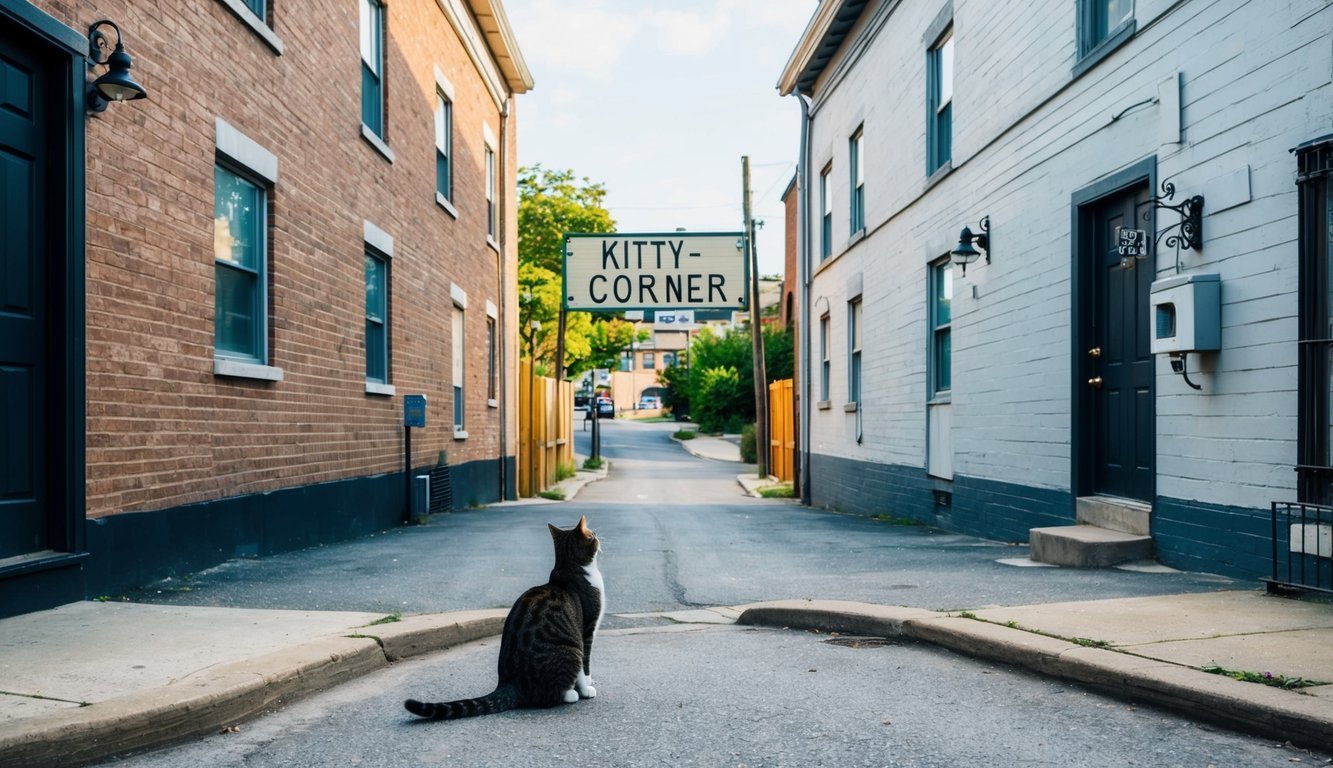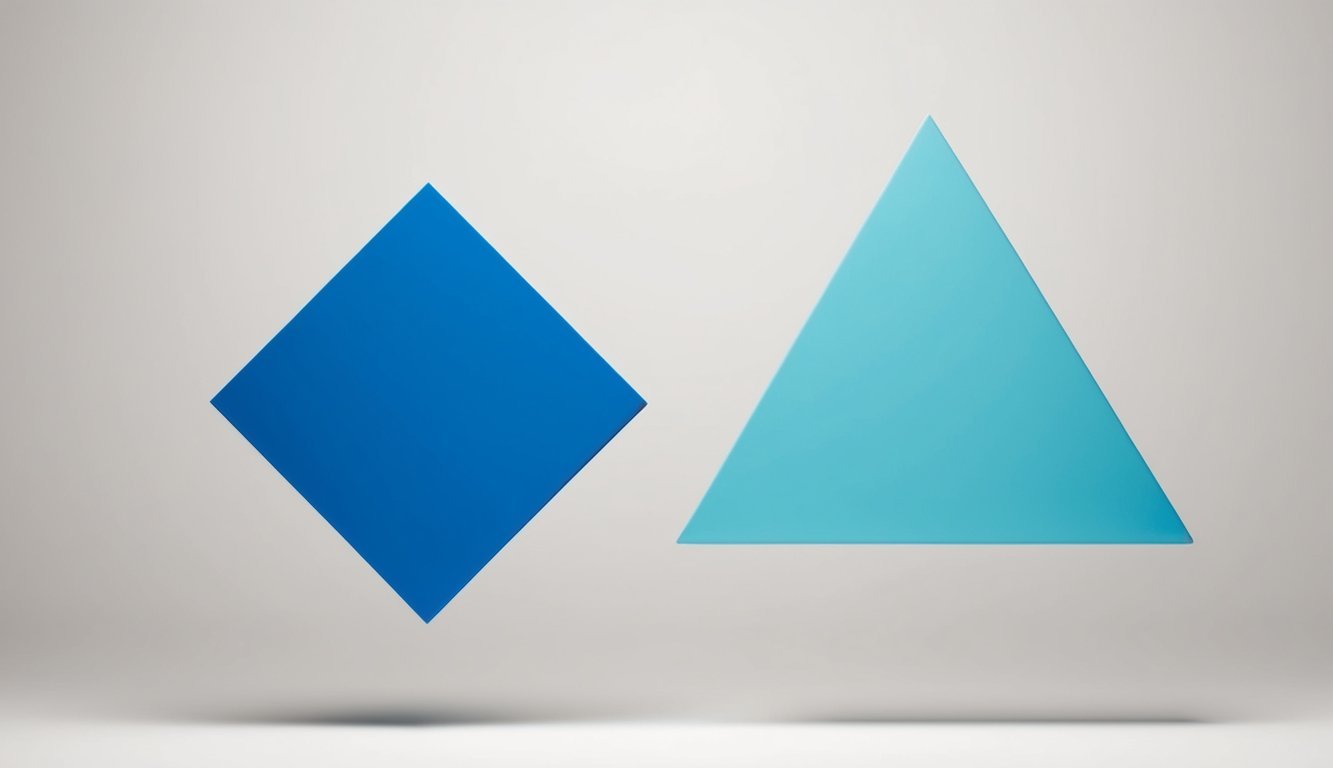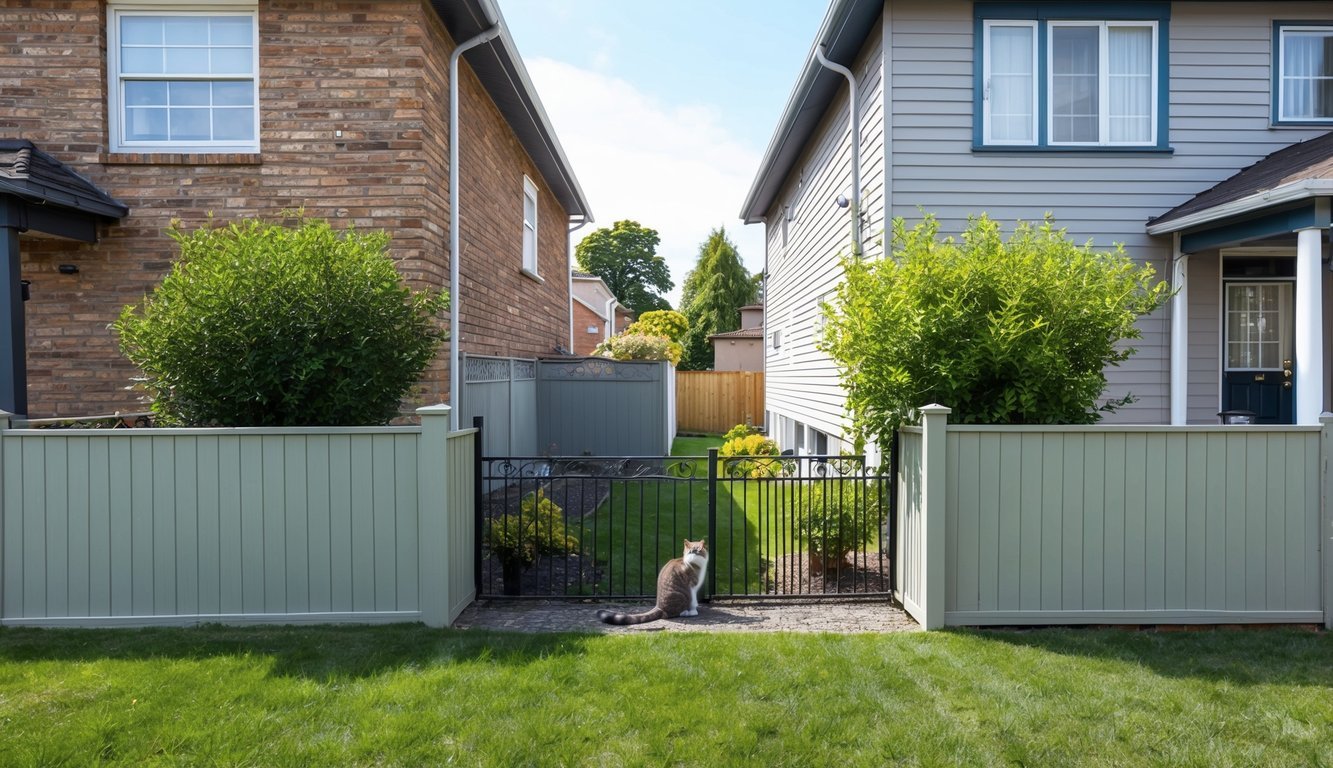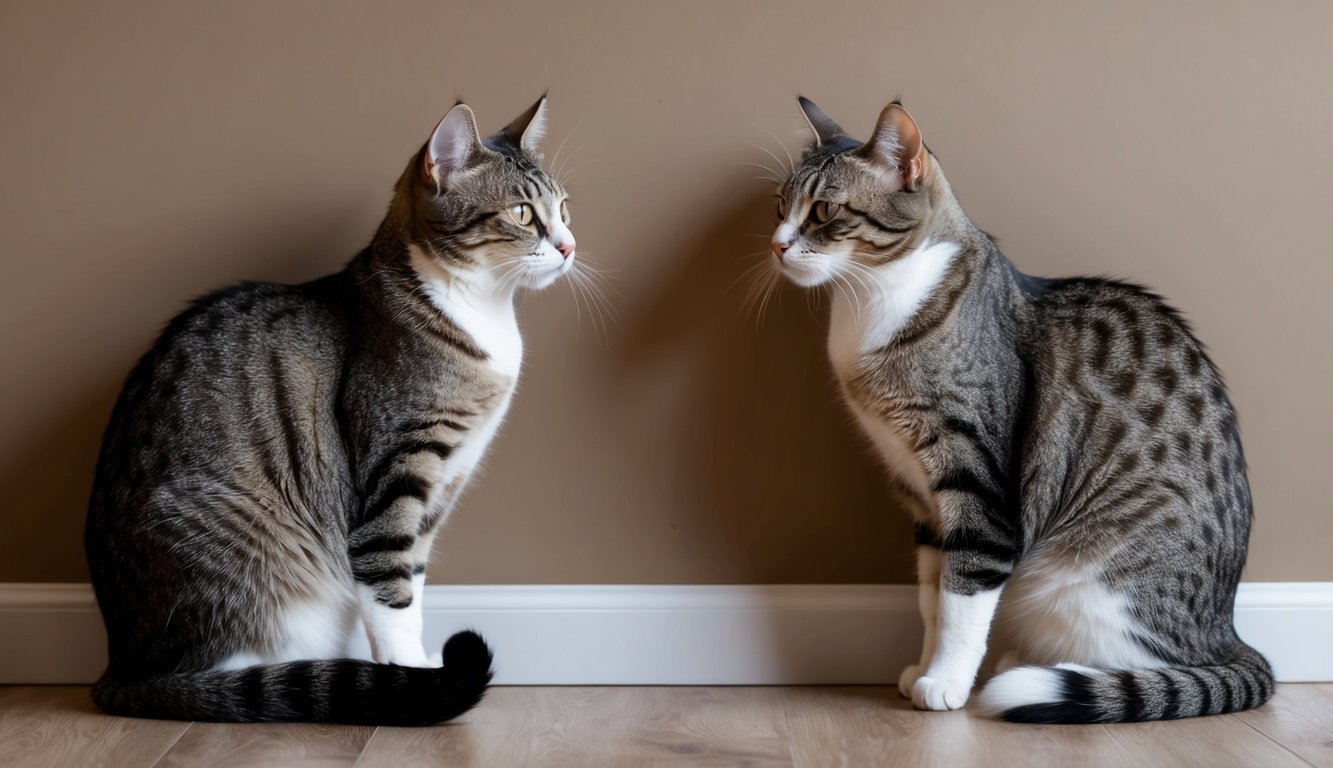PsychNewsDaily Publishers
100 Summit Drive
Burlington, MA, 01803
Telephone: (320) 349-2484
PsychNewsDaily Publishers
100 Summit Drive
Burlington, MA, 01803
Telephone: (320) 349-2484
The term kitty-corner originates from cater-corner, indicating diagonal positioning. Variations include catty-corner and caddy-corner, reflecting regional usage and playful language evolution.

The term “kitty-corner” has an interesting background. It has multiple variations and reflects changes within the English language over time.
“Kitty-corner,” also known as “catty-corner,” comes from the older term “cater-corner.” This phrase has its roots in the Middle French word “quatre,” meaning four. It refers to something being positioned diagonally across from a corner.
Over time, it morphed into different forms, such as “cat-a-corner” and “catawampus.”
In various regions, “kitty-corner” is used interchangeably with “catty-corner.” In some places, it reflects a playful or informal tone. The variations show how language can evolve in different cultures while still keeping the same core meaning.
The usage of “kitty-corner” illustrates changes in American English. Originally, it brought a sense of directionality, suggesting placement across from another point.
Over time, this term became more common in everyday speech. The playful nature of the word makes it appealing, especially in casual conversations.
While still used today, people often encounter numerous expressions with similar meanings.
Changes in language like this highlight how words adapt over time. The etymology and regional variations provide insight into language development, showing how history influences daily communication.

Understanding the geometry of shapes helps in visualizing patterns and relationships. This section focuses on diagonals and how they connect corners, revealing interesting properties in geometric figures.
In geometry, a diagonal connects two non-adjacent corners of a shape. For example, in a square or rectangle, drawing lines from one corner to the opposite corner creates two triangles. This division helps in calculating area and understanding symmetry.
Diagonals exist in various shapes, including four-sided figures like squares and rectangles. They can also be found in dice, where opposite corners are connected.
Understanding the basic properties of diagonals aids in deeper mathematical concepts, such as how to find lengths using the Pythagorean theorem.
Diagonals have significant relationships with the shapes they belong to. For example, in a square, both diagonals are equal in length and bisect each other at right angles. This makes them particularly useful for constructing other geometrical figures.
Additionally, an oblique diagonal often relates to the angles of a shape. When a diagonal goes across a figure, it can create smaller triangles, revealing angle relationships.
Exploring these diagonal relationships can enhance one’s understanding of geometric principles and their applications in real-world scenarios, such as architecture and design.

The term “kitty-corner” is commonly used in both everyday language and specific verbal contexts. It describes a position that is diagonal from something else, adding a touch of clarity to directions and locations.
In casual conversation, “kitty-corner” helps people describe locations. For example, one might say, “The store is kitty-corner from the library.” This gives a clearer idea than just saying the store is “across from” the library.
The term is especially useful in cities where intersections can get complex. It indicates a diagonal direction, differentiating it from direct paths.
People often use it when giving directions: “To get to the park, go kitty-corner from the coffee shop.”
Many people may also say “catty-corner,” which means the same thing but can vary by region. Understanding this term can help avoid confusion when navigating busy areas.
In verbal communication, “kitty-corner” serves as a fun and informal way to describe places. For instance, when talking about buildings, one might say, “The gym is kitty-corner to the post office.”
Since the term adds imagery, it makes descriptions more vivid. It can enhance storytelling. If someone says, “The tiny cafe is kitty-corner to the art gallery,” it paints a clearer picture in the listener’s mind.
Using “kitty-corner” in directions also encourages interaction. It invites questions and clarifications. Introductions of this term can lead to lively discussions about local landmarks. This small addition to language can brighten everyday interactions.

The term “kitty corner” has a few synonyms and variations that describe the same diagonal positioning. These terms can be used in casual conversation and may vary by region.
One common synonym for “kitty corner” is caddy-corner. This phrase also describes something positioned diagonally opposite. “Catty-corner” is another variation that serves the same purpose and is frequently used in some areas.
Additionally, “cater-cornered” can be heard, particularly in more formal settings. These terms all signify the same concept of placement and can be used interchangeably.
All these phrases convey the idea of being at an angle to each other, making them useful in daily conversation about directions or arrangements.
There are also some lesser-known terms tied to “kitty corner.” Kitty-wampus is a playful variation that some people use to describe something that is off balance or askew. Similarly, cattywampus captures a similar meaning, often indicating a disordered or tilted position.
These terms, while less common, add a fun twist to language and highlight regional dialects. They show how language evolves and how different areas may use unique phrases for similar concepts.
In casual chats, these variations can bring a smile while still being clear in meaning.

The term “kitty corner” appears in various cultural contexts, especially in literature and media. Its usage often conveys a sense of playfulness or familiarity. Different regions may also have unique variations of this term, contributing to its rich cultural tapestry.
In literature, “kitty corner” is often used to create a whimsical or friendly atmosphere. For instance, children’s books sometimes feature characters or settings that are described as being “kitty corner” to each other, enhancing the playful tone of the story.
In media, the phrase can be found in dialogue or descriptions, adding a lighthearted touch to conversations. It illustrates spatial relationships in a way that sounds inviting and fun. This kind of imagery can be seen in shows aimed at families and children, where the playfulness of neighborhoods is highlighted.
The term appears in various regions with slight variations like “kiddie corner” or even “cat corner.” For example, “kiddie corner” often refers to spaces designed for children, like play areas or classrooms. It’s a term that evokes images of fun and safety.
In some areas, especially in the U.S., the phrase may be more common in informal speech. Merriam-Webster notes the playful nature of “kitty corner,” and its regional variations can reflect local culture. The term often adds a friendly flair to everyday language, making conversations more engaging.
By using “kitty corner” and its variations, communities create a sense of approachability and warmth, making it a beloved part of colloquial speech.

This section addresses common inquiries about the term “kitty corner”. The questions cover differences in terminology, origin, usage, and its equivalents in other languages.
“Kitty-corner” and “catty-corner” both refer to something located diagonally across from a specific point. The terms are interchangeable, but “kitten” or “kitty” may evoke a friendlier tone.
The term “kitty-corner” likely comes from the word “kitten,” suggesting a playful or cute angle. It is believed to have roots in the expression “catercornered,” which dates back to the 19th century.
To use “kitty-corner” correctly, one might say, “The bank is kitty-corner to the grocery store.” This indicates that the bank is directly across from the grocery store at a diagonal.
In British English, the equivalent term is often “cater-corner.” It serves the same purpose and means something is diagonal across from another location.
Historically, “kitty-corner” has been used mainly in American English. The usage signifies not only directional placement but also community and familiarity in social contexts.
In other languages, there are phrases that describe diagonal positioning. For instance, Spanish speakers might say “diagonalmente” to explain objects or places that are positioned diagonally.